Abstract
A model of pulmonary blastomycosis in the mouse, in which the portal of entry is the same as natural human infection, was used to study resistance to challenge after subcutaneous infection. One week after subcutaneous infection, mice were partially resistant to pulmonary challenge, and mice challenged two weeks after infection were resistant. Measurement of cellular and humoral immune responses to Blastomyces dermatitidis antigens after subcutaneous infection showed the following. (i) Delayed-type hypersensitivity appeared 1 week after infection, and responses increased for 3 weeks thereafter. (ii) Proliferative responses in vitro appeared in spleen cells at 1 week and in contralateral lymph node cells at 3 weeks, (iii) Serum antibody, detected by an enzyme-linked immunosorbent assay, appeared 1 week after infection and then increased in titer. (iv) Peritoneal macrophages were activated to inhibit replication of B. dermatitidis in vitro by the first week after infection. Prior subcutaneous infection also resulted in rapid clearing of a second subcutaneous challenge, as well as resistance to a lethal intraperitoneal challenge. This resistance was associated with the development of cell-mediated and humoral immune responses. These data provide a chronological framework for selective transfer experiments.
Full text
PDF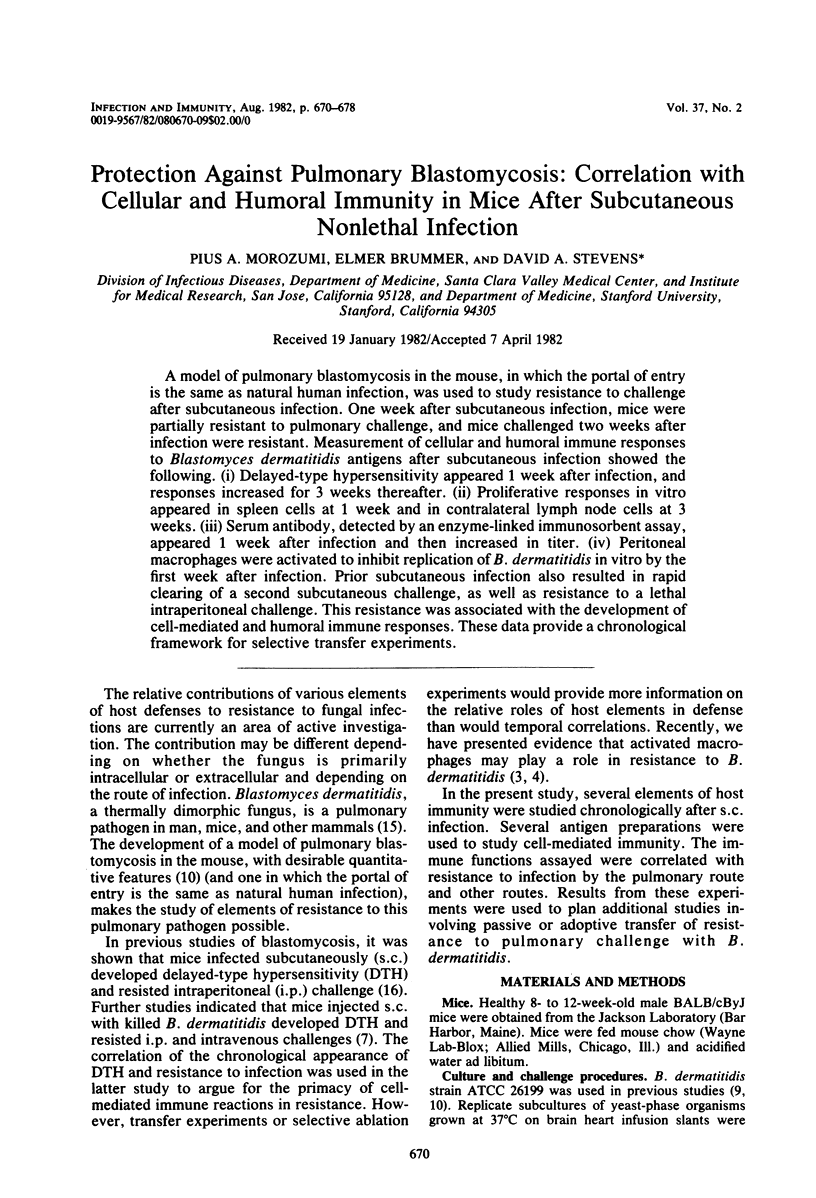
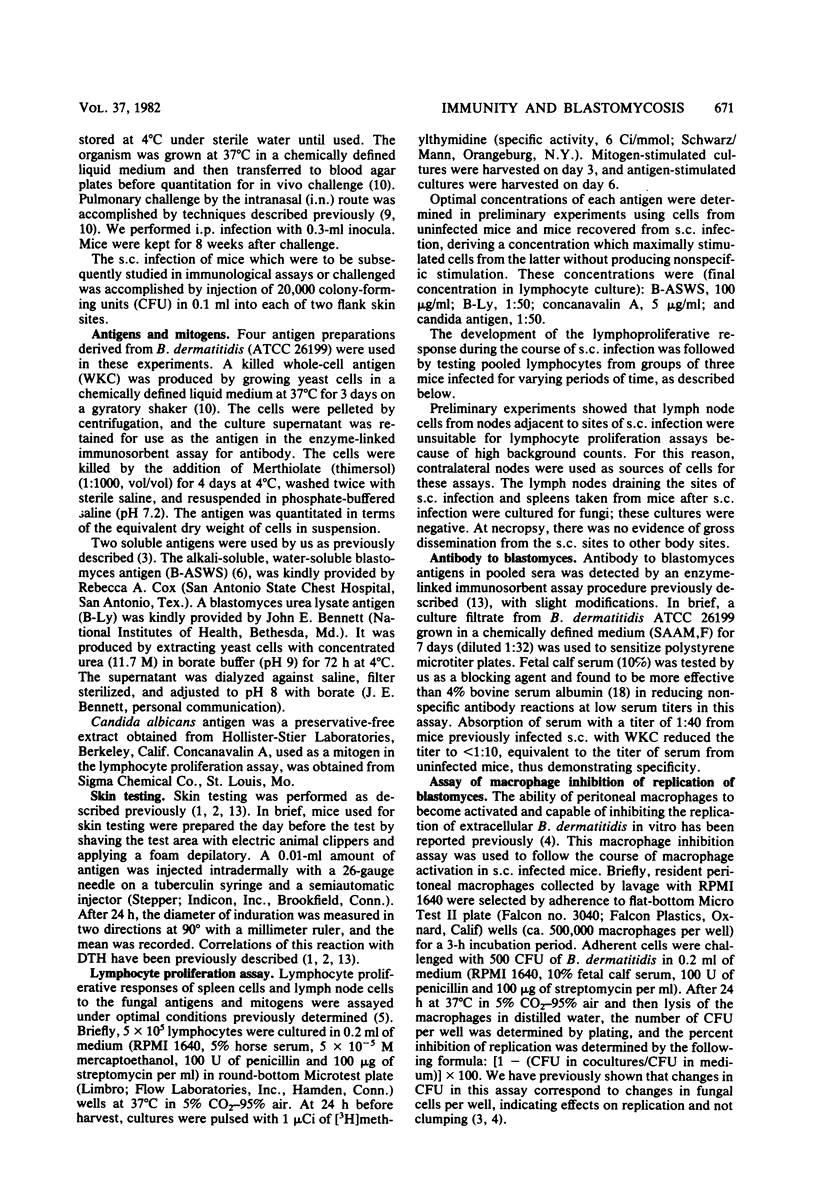
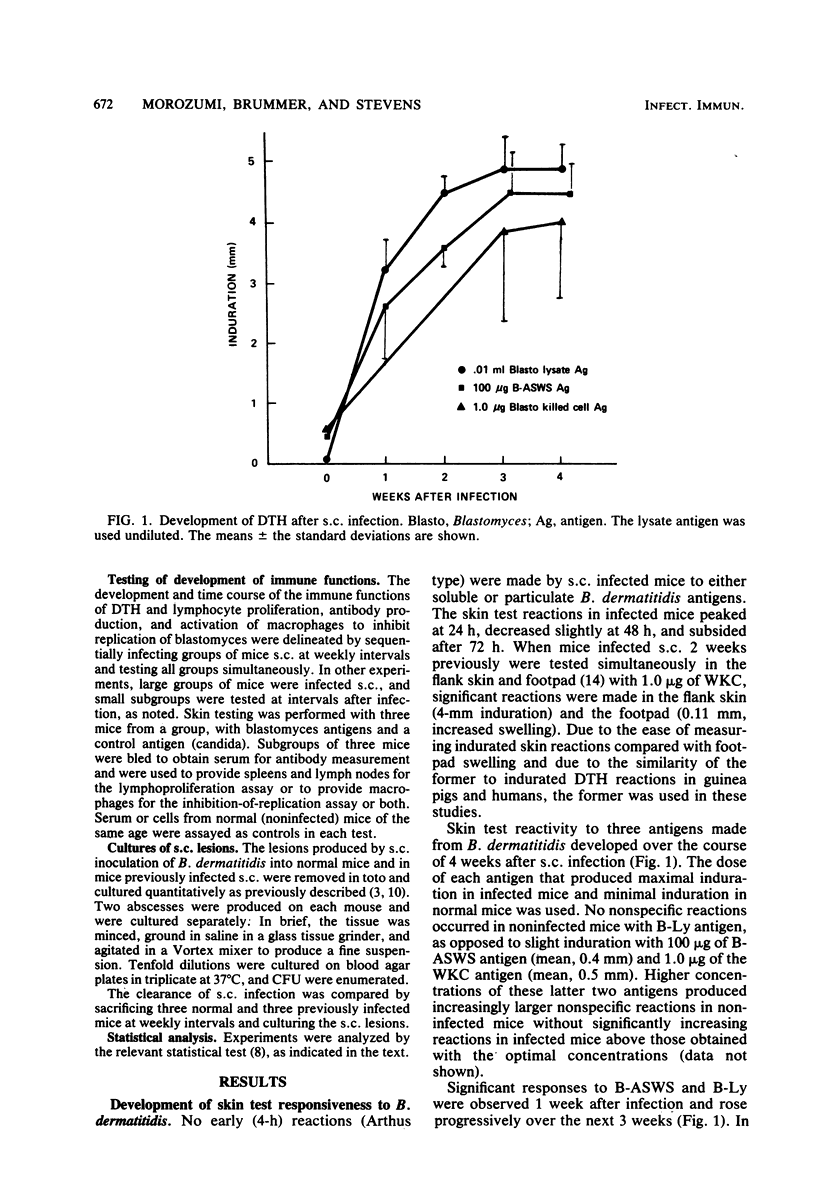
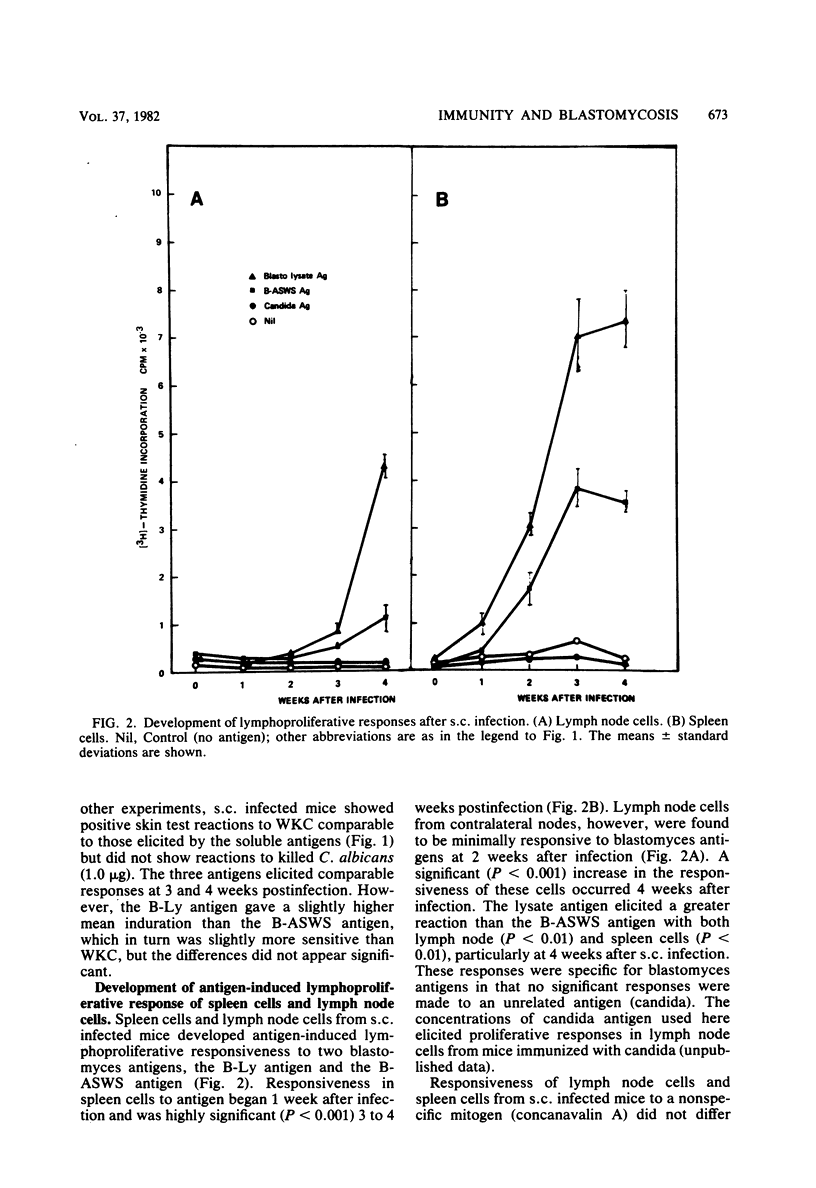
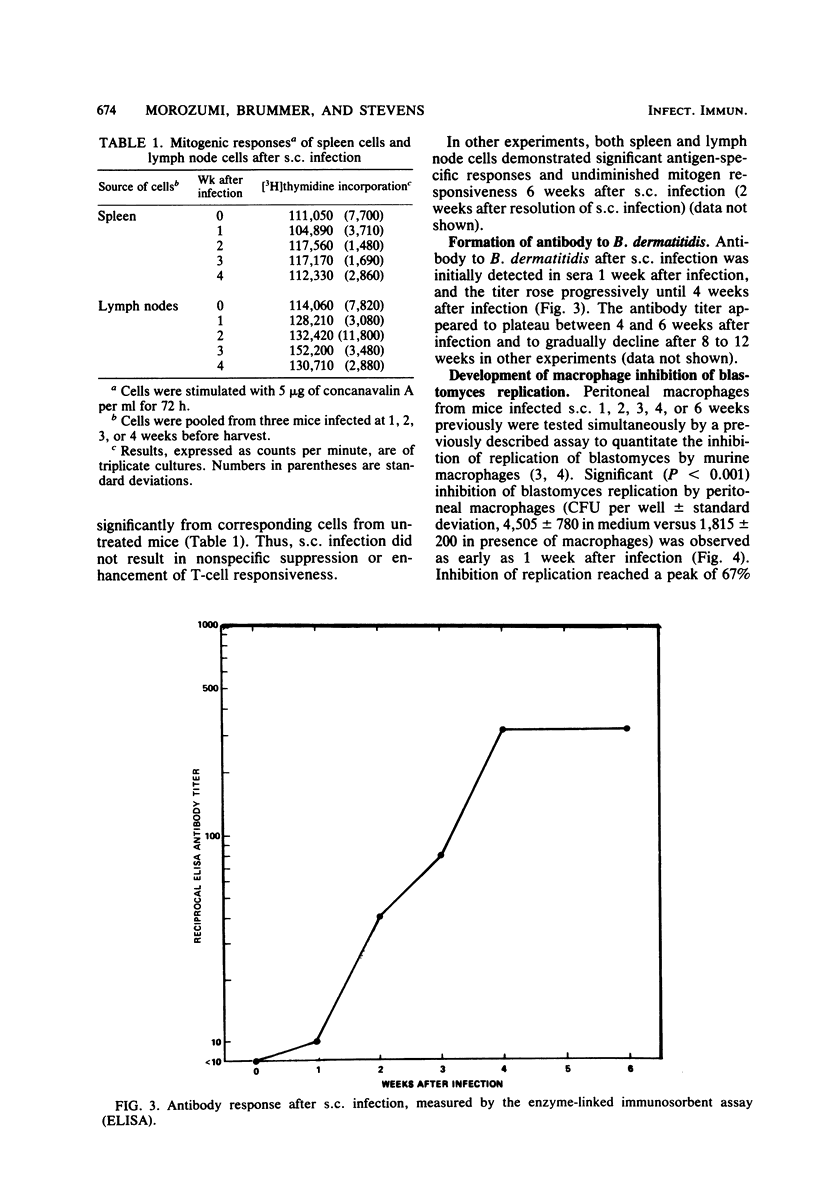
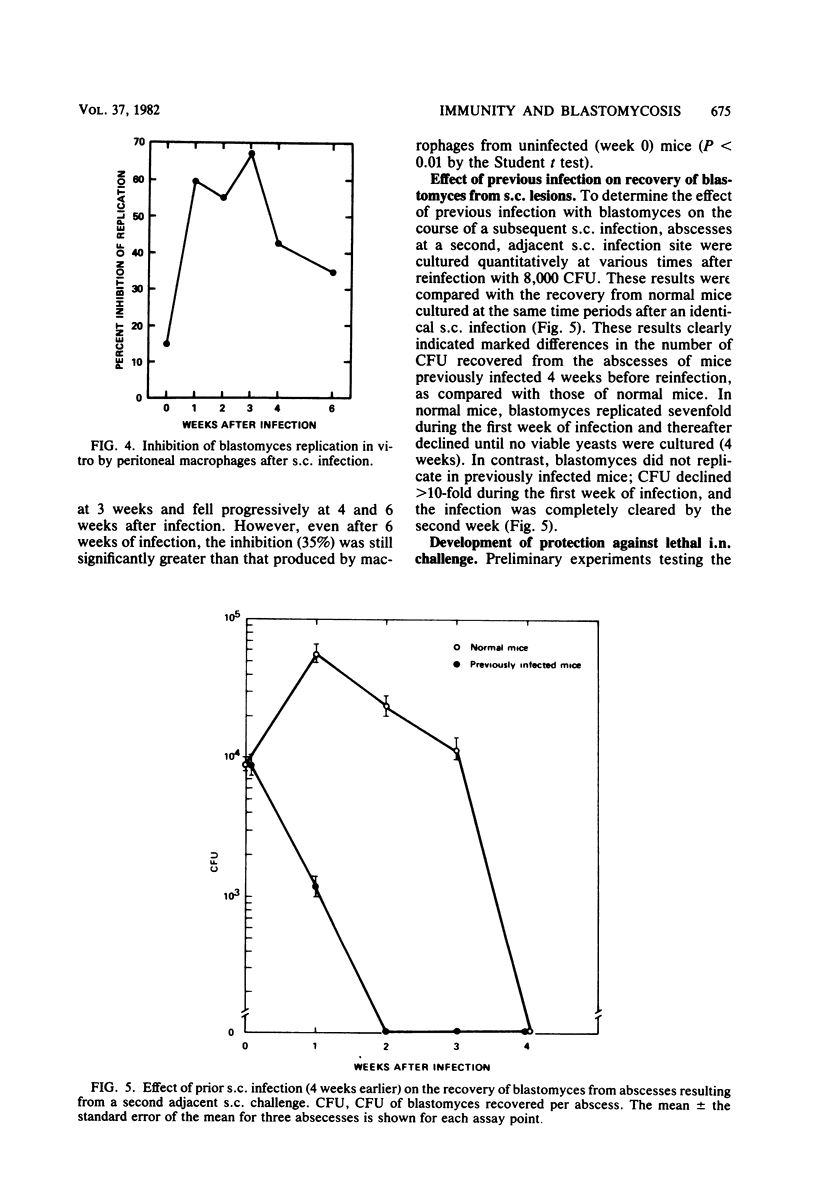
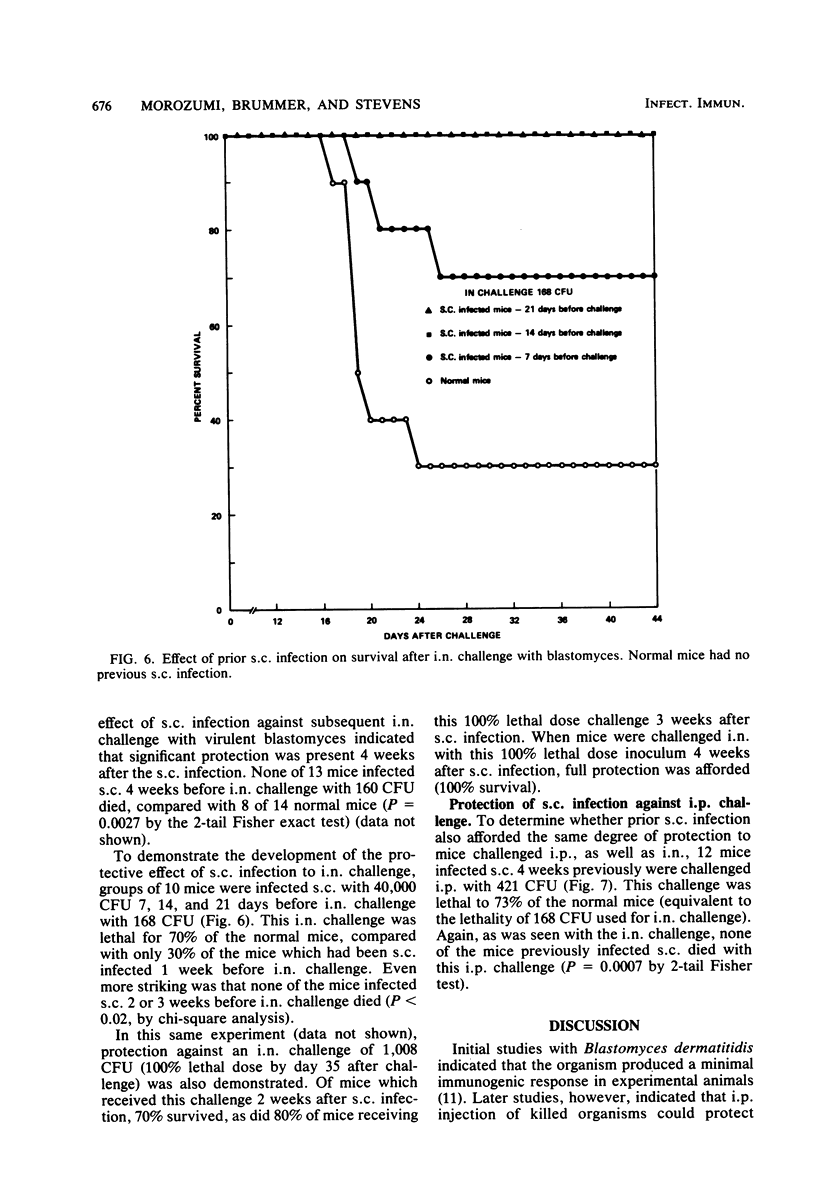

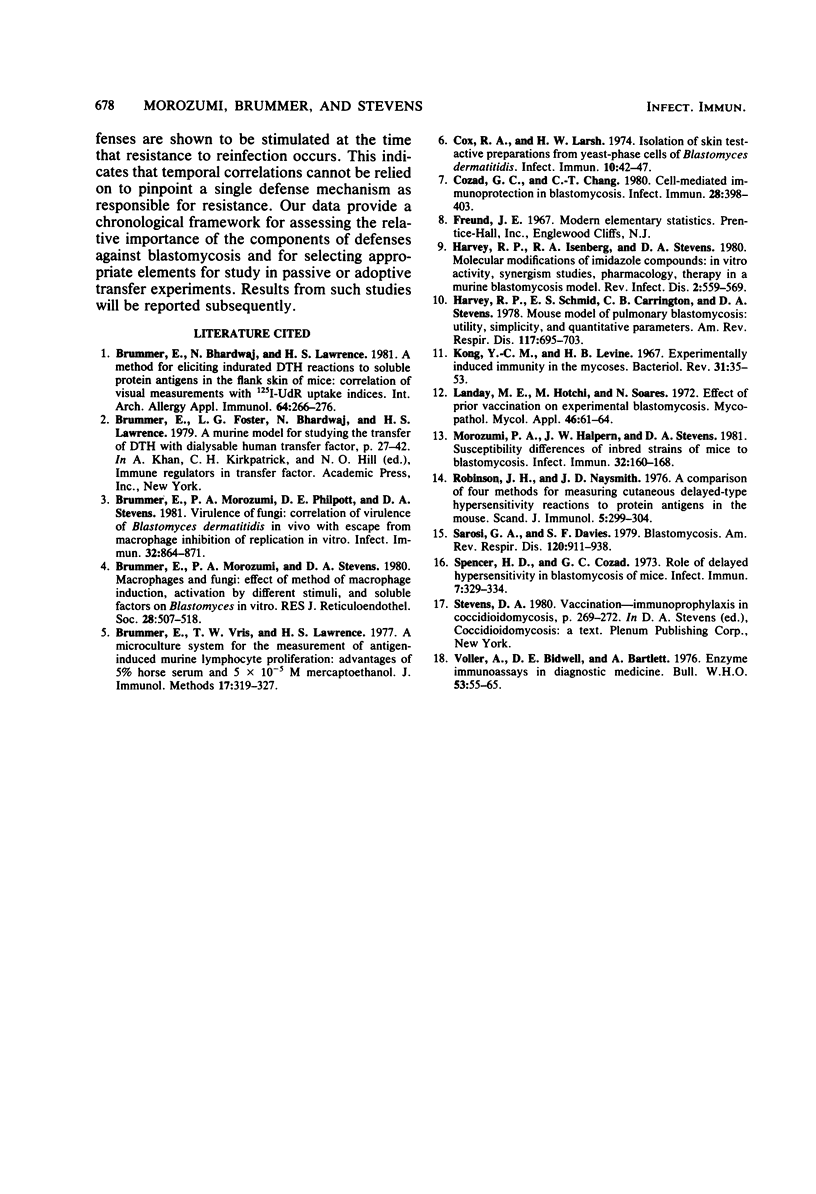
Selected References
These references are in PubMed. This may not be the complete list of references from this article.
- Brummer E., Bhardwaj N., Lawrence H. S. A method for eliciting indurated DTH reactions to soluble protein antigens in the flank skin of mice: correlation of visual measurements with 125I-UdR uptake indices. Int Arch Allergy Appl Immunol. 1981;64(3):266–276. doi: 10.1159/000232703. [DOI] [PubMed] [Google Scholar]
- Brummer E., Morozumi P. A., Philpott D. E., Stevens D. A. Virulence of fungi: correlation of virulence of Blastomyces dermatitidis in vivo with escape from macrophage inhibition of replication in vitro. Infect Immun. 1981 May;32(2):864–871. doi: 10.1128/iai.32.2.864-871.1981. [DOI] [PMC free article] [PubMed] [Google Scholar]
- Brummer E., Morozumi P. A., Stevens D. A. Macrophages and fungi: in vitro effects of method of macrophage induction, activation by different stimuli, and soluble factors on Blastomyces. J Reticuloendothel Soc. 1980 Dec;28(6):507–518. [PubMed] [Google Scholar]
- Brummer E., Vris T. W., Lawrence H. S. A microculture system for the measurement of antigen-induced murine lymphocyte proliferation: advantages of 5% horse serum and 5 X 10(-5) M mercaptoethanol. J Immunol Methods. 1977;17(3-4):319–327. doi: 10.1016/0022-1759(77)90114-4. [DOI] [PubMed] [Google Scholar]
- Cox R. A., Larsh H. W. Isolation of skin test-active preparations from yeast-phase cells of Blastomyces dermatitidis. Infect Immun. 1974 Jul;10(1):42–47. doi: 10.1128/iai.10.1.42-47.1974. [DOI] [PMC free article] [PubMed] [Google Scholar]
- Cozad G. C., Chang C. T. Cell-mediated immunoprotection in blastomycosis. Infect Immun. 1980 May;28(2):398–403. doi: 10.1128/iai.28.2.398-403.1980. [DOI] [PMC free article] [PubMed] [Google Scholar]
- Harvey R. P., Schmid E. S., Carrington C. C., Stevens D. A. Mouse model of pulmonary blastomycosis: utility, simplicity, and quantitative parameters. Am Rev Respir Dis. 1978 Apr;117(4):695–703. doi: 10.1164/arrd.1978.117.4.695. [DOI] [PubMed] [Google Scholar]
- Kong Y. C., Levine H. B. Experimentally induced immunity in the mycoses. Bacteriol Rev. 1967 Mar;31(1):35–53. doi: 10.1128/br.31.1.35-53.1967. [DOI] [PMC free article] [PubMed] [Google Scholar]
- Landay M. E., Hotchi M., Soares N. Effect of prior vaccination on experimental blastomycosis. Mycopathol Mycol Appl. 1972 Jan 26;46(1):61–64. doi: 10.1007/BF02051896. [DOI] [PubMed] [Google Scholar]
- Morozumi P. A., Halpern J. W., Stevens D. A. Susceptibility differences of inbred strains of mice to blastomycosis. Infect Immun. 1981 Apr;32(1):160–168. doi: 10.1128/iai.32.1.160-168.1981. [DOI] [PMC free article] [PubMed] [Google Scholar]
- Robinson J. H., Naysmith J. D. A comparison of four methods for measuring cutaneous delayed- type hypersensitivity reactions to protein antigens in the mouse. Scand J Immunol. 1976;5(3):299–304. doi: 10.1111/j.1365-3083.1976.tb00282.x. [DOI] [PubMed] [Google Scholar]
- Sarosi G. A., Davies S. F. Blastomycosis. Am Rev Respir Dis. 1979 Oct;120(4):911–938. doi: 10.1164/arrd.1979.120.4.911. [DOI] [PubMed] [Google Scholar]
- Spencer H. D., Cozad G. C. Role of delayed hypersensitivity in blastomycosis of mice. Infect Immun. 1973 Mar;7(3):329–334. doi: 10.1128/iai.7.3.329-334.1973. [DOI] [PMC free article] [PubMed] [Google Scholar]
- Voller A., Bidwell D. E., Bartlett A. Enzyme immunoassays in diagnostic medicine. Theory and practice. Bull World Health Organ. 1976;53(1):55–65. [PMC free article] [PubMed] [Google Scholar]


